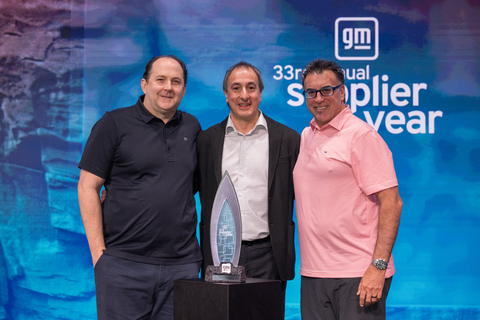

The Swedish firm NIRA Dynamics AB is a decade old this year and has continued its path-breaking work in the research and development of signal processing for vehicles. The company has the ISO 9001:2008 quality certification and prides itself on its efficient and structured processes and test tools. The core competence of NIRA Dynamics is the development of unique sensor fusion based systems for different vehicle applications. These systems utilize the potential in the sensor fusion idea to improve the performance using already existing sensors in the vehicle thus reducing the system cost compared to systems that add sensors and hardware. Through close collaborations with world-class research groups at Linköping University, Sweden, the company says it is constantly in touch with the research frontier in these and other areas where sensor fusion and other types of signal processing are employed.
The algorithms developed by NIRA Dynamics make use of ABS/ESC wheel speed sensors, yaw and/or roll rate gyros, accelerometers, GPS, and various engine and power train related signals. These signals are fed into a sensor integration unit which merges the information from the different sensors and allows the computation of the virtual sensor signals. These, in turn, may be used as inputs to various systems, such as anti-spin systems and adaptive cruise control systems, or in some Human/Machine Interfaces (HMI), for example a display on the dashboard. Another important feature of a sensor fusion based solution is the increased possibilities to detect and isolate faulty sensors and to reconfigure the system to achieve ‘limp home’ functionality.
“We provide the global vehicle industry with innovative, value-adding products”. We do this by using our expertise in signal processing, modeling, and control to design unique, high-tech products. We are the perfect partner for innovative and challenging development projects in international environments,” says the company.
NIRA Dynamics has developed and markets the Tire Pressure Indicator TPI, which the company describes as “the most powerful indirect tire pressure monitoring system (TPMS) available”. The system analyses signals from the car’s electronic stability control system and other electronic systems to detect if one or more tires has insufficient pressure. With TPI, the driver will be alerted if any of the tires is under-inflated long before the tire breaks down. It also improves economy and decreases the environmental impact since tire wear and fuel consumption are reduced when tires are correctly inflated. TPI is a software solution which determines deviations from the nominal tire inflation pressure from the wheel speed signals and does not require any in-wheel pressure sensors and RF components. TPI is therefore very cost effective and easy to integrate into different ESP and other types of hardware. So far, over one million vehicles have TPI activated and the system has shown to be very robust with no customer complaints.
In 2009, the European Union released new guidelines for tire pressure monitoring systems or TPMS to make these compulsory for all new cars by November 2012. The EU is expected to formally ratify this decision in the beginning of this year. NIRA Dynamics says that its software based TPI is safe, environmentally friendly and easy to install.
Recent tests in Southern Spain have shown that the latest TPI software from NIRA Dynamics is fully compliant to the new EU regulations (ECE-R 64).
NIRA Dynamics’ product portfolio has recently been expanded with a data logger box. The aimed customers are OEM’s and their development units where the need for data logging in cars is large. NIRA has started the field tests with the new box which has interfaces to FlexRay, CAN, GPS etc. The media used for storage is the well known and convenient SD-Card. The whole unit can easily be fit in the glove compartment.
Early this year, on January 15th, NIRA Dynamics obtained a new chief executive officer – Dr Predrag Pucar. Automotive Industries caught up with the company’s new CEO.
AI: Tell us about the work NIRA Dynamics is doing with Linköping University.
P. Pucar: We always have at least one project running together with Linköping University. I have graduated and have a PhD from the university which makes contacts a lot easier. Right now we are looking a lot on estimation of parameters connected to vehicle dynamics. Detection of changes, which is our specialty, in such parameters could be used for preparation of other systems in a vehicle, for instance the automatic cruise control, electronic stability program, etc.
AI: What are some of the breakthroughs in sensor technology that you can share with us?
P. Pucar: At NIRA, we try not to take the straightforward solution, which mostly is to add sensors when you need to measure something. The core competence at NIRA is to create virtual signals via sensor fusion and signal processing and to conclude on important information that is interesting in a specific application. This is one way of using sensor fusion, i.e. make intelligent conclusions by using existing information and knowledge of dependencies in the system. The other application is to use low performance sensors (cheaper sensors) and enhance their performance by the use of sensor fusion. So, we are not that much dependent on sensor technology, rather vice versa. If there was a world with top performing sensors that cost almost nothing, we would be out of business.
AI: Tell us about TPI – what potential do you see for your indirect tire pressure monitoring system with new EU regulations?
P. Pucar: This may sound very un-Swedish, i.e. not very humble, but I really do not see any hinders for TPI to be a trendsetting product. Facts are: the product is already implemented in over a million cars within the Volkswagen group (Seat, Audi, VW); we have recently intensively developed the TPI so it now fulfils the ECE-R 64 requirements; in February, we performed tests in Southern Spain where we drove nearly 100 000 km – and it works beyond expectations. Is there any OEM purchaser out there who would say “no” to that kind of cost reduction that an indirect system presents relative to a direct measuring one combined with even more satisfied customers?
I am predicting that we will have TPI in over 2 000 000 cars by the end of the year. We also have serious interest in starting pre-series projects with several OEM’s.
AI: What gives TPI an edge over other similar products? It had won the 2008 European Automotive Chassis Product of the Year Award – any other similar accolades in the pipeline?
P. Pucar: The edge is the price. To be honest, tire pressure is not a very sexy thing. I guess, you will not buy a car just because it has a fancy tire pressure monitoring system. So, the customer wants to know when he has a problem with tire pressure, but if everything is OK – don’t bother him. Using TPI, there is no fuss with maintenance, sensors not working, and expensive work shop bills for something that simply should work. The conclusion is obvious: the OEM’s will go for the most cost effective system as long as it is robust and fulfils legal as well as customer requirements. TPI is the acronym for exactly such a system.
And, no, I do not know of any rewards heading our way right now – besides the one million small awards we just received from our customers. Maybe something in the environmental area? With TPI, the environmental footprint is in every aspect not only zero – it is even positive once we have the product on the road. Compare that with thousands of tons of toxic electronic waste caused by sensor-based TPMS and their batteries. How sure can you be that all this will not simply be disposed just somewhere in a poor 3rd world country? Think of all the cars being exported there once they have several 100 000 km on the clock.
AI: Since TPI was introduced in nearly all Audi vehicles a few years ago – which other OEMs have used it in their vehicles?
P. Pucar: So far, only OEM’s within the Volkswagen group have TPI in their vehicles. One of my main goals this year is to win at least one contract for a pre-series development that will lead to a series production contract after evaluation by the OEM.
AI: What are some of the features of NSC that make it popular with vehicle manufacturers – Volvo for example had installed NSC in certain models – who are the other car makers that have installed NSC in their vehicles?
P. Pucar: Now that full-scale ESC systems covering this function have become standard at least in Europe, the market for separate systems of this kind has practically vanished. We are hence not developing NSC anymore.
AI: What is your mandate after taking over as CEO of NIRA Dynamics? Tell us a little about your vision for the company.
P. Pucar: My mandate is to develop NIRA Dynamics further. Let’s face it: we have one product which is a hit. Up to now, OEM’s within the VW group have adopted it. My mission is that within 3-5 years, NIRA counts to its customers OEM’s outside the VW group, that we have at least one further top-selling product and yet another one in development.
I believe the customer diversification of TPI will be straightforward. The challenge is to find another best selling product. We are working together with Linköping University and we will work a lot together with the OEM’s within the VW group to find problems which can be solved “the NIRA way”. Furthermore, cooperation with other companies aiming at innovations in the car industry, I believe, is another source of inspiration. We have initial contacts with several firms, but we can discuss this in a year or two, right now it is too early and sensitive to share this with the public.













More Stories
Automotive Industries (AI) Newsletter April 2025
Bangkok International Motor Show 2025 – The Talk of Sensuous Automotive
Dürr Systems on paint supply: The foundation for high coating quality